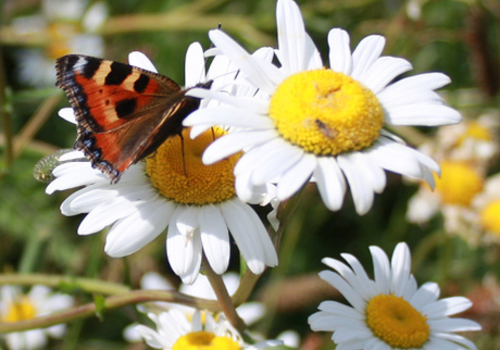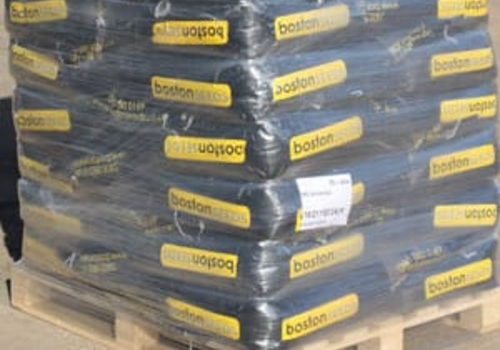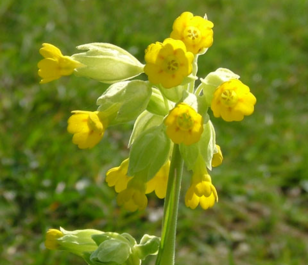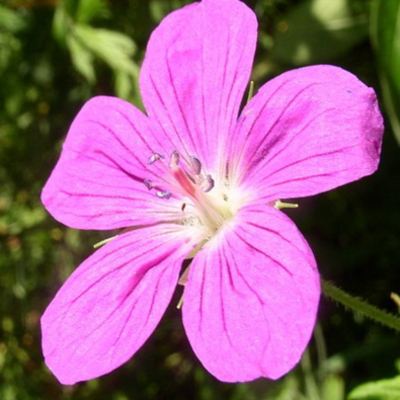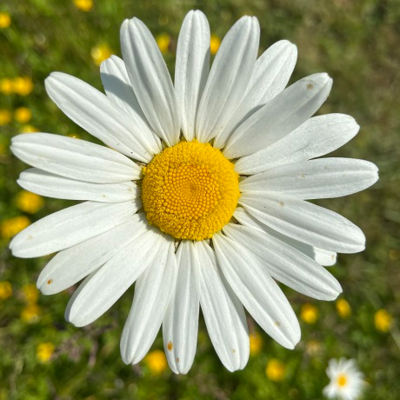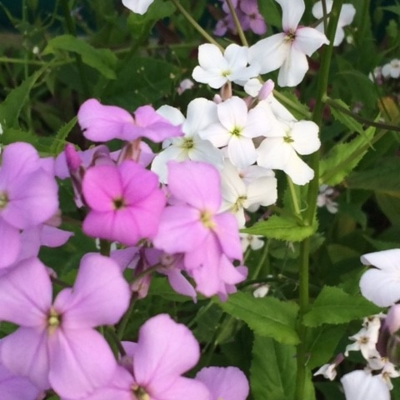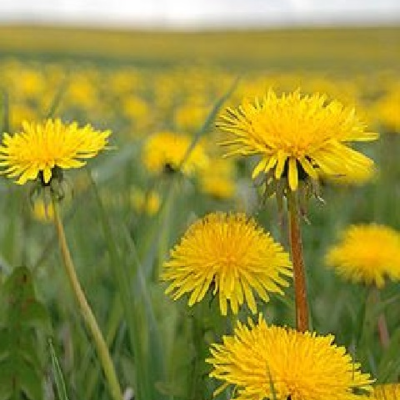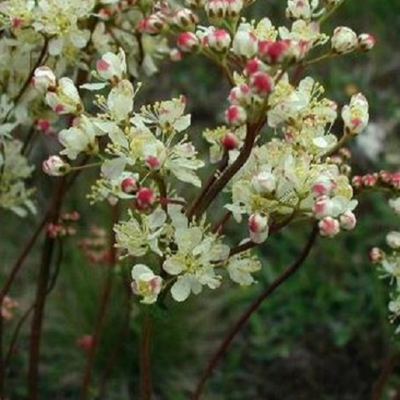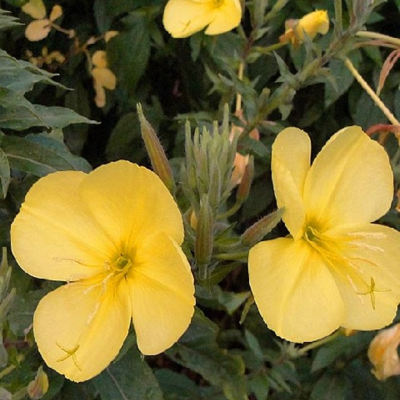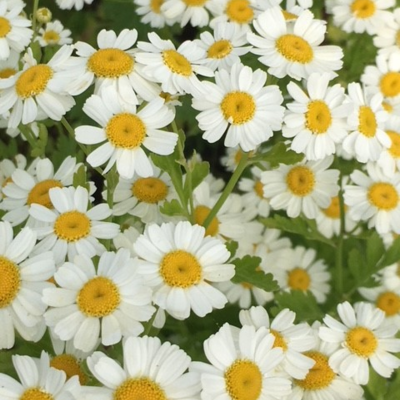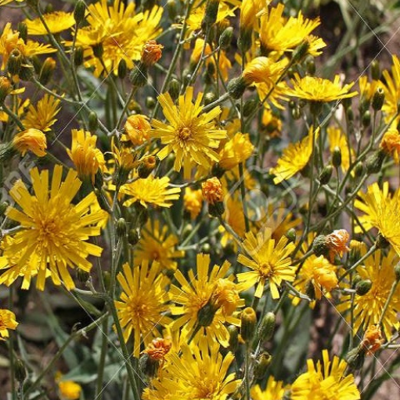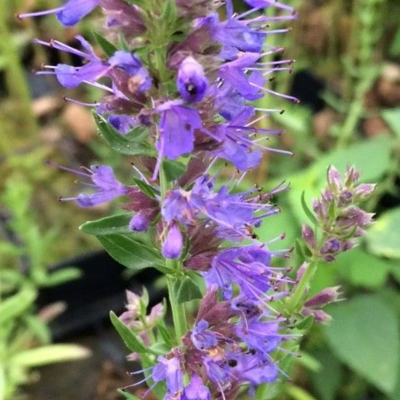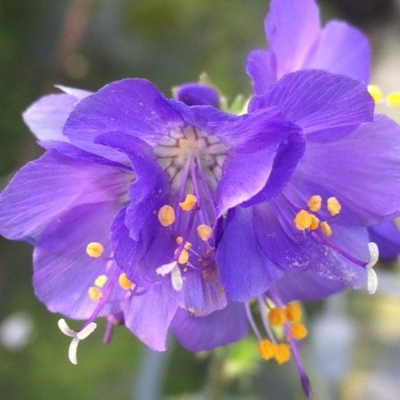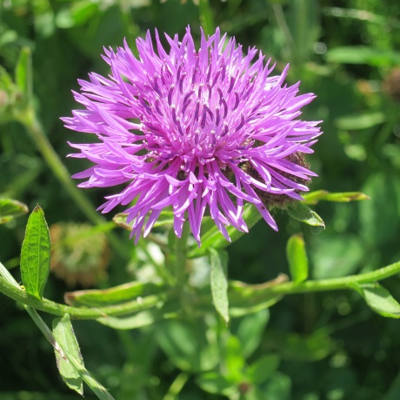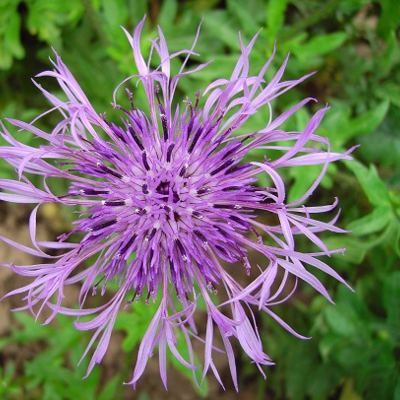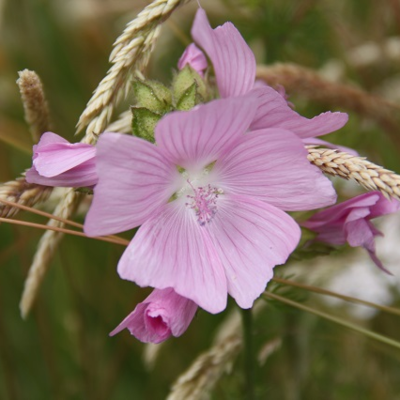Wildflower Plants A to Z
Choose from our entire range of over 100 wildflower plug plants, expertly grown in our very own nursery from high quality, UK native wildflower seed. Our wildflower plugs are ready to be planted straight out into your garden or meadow as soon as they arrive, all year round. Buying individual wildflower plants is one of the best ways to establish your chosen wildflower species, planted individually or as part of a more diverse meadow created from our range of wildflower seeds.
Don't hesitate to get in touch to speak to one of our experts or request a catalogue to view our full range. Ordering regularly or looking for large volumes? Click here to apply for a trade account today - we review all applications within one working day.

Plants for Pollinators highlights plants selected by the RHS as scientifically proven to tackle the declines in bees, butterflies and other pollinators.
Cowslip plants form clusters of bell-shaped, sunny yellow flowers with distinct tubed calyxes. Known for having a sweet and strong scent compared to apricots, and it has a history in folklore, with uses in weddings and other festivities. An easy-to-grow Easter-time treat!
- Type: Perennial
- Height: 15–30cm.
- Flowers: April-May
- Soil Requirement: Moist but well-drained
- Light Requirement: Full sun or partial shade
- Natural Habitat: Meadows, woodlands, road verges
- Also known as: Fairy Cup, Key Flower, Luck Flower, Paggles
Hedge Cranesbill is a sublime, showy species of wildflower, its lobed petals a perfect palette of glowing pink and mellow purple, often with darker-coloured veins. This fuchsia firework of a flower is long-flowering and hardy, meaning it’ll grace your garden for a long time.
- Type: Perennial
- Height: 20–45cm.
- Flowers: April-May
- Soil Requirement: Well-drained
- Light Requirement: Partial shade
- Natural Habitat: Meadows, woodlands, road verges
- Also known as: Hedgerow Cranesbill, Mountain Cranesbill
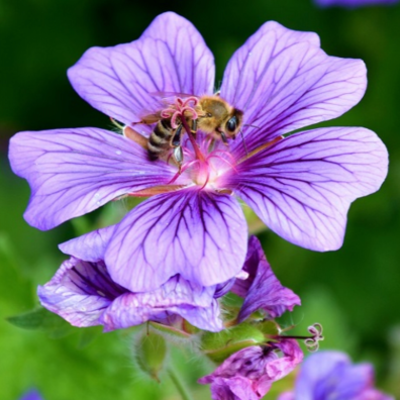

Plants for Pollinators highlights plants selected by the RHS as scientifically proven to tackle the declines in bees, butterflies and other pollinators.
The Meadow Cranesbill gets its name from its attractive, beak-like seed pods, but no bird could match the beauty of this flower's veined violet petals mixed with blue growing in pairs on tall, forked stems. Easy to naturalise and attractive to bees and butterflies, the sky's the limit with this wildflower!
- Type: Perennial
- Height: 60-100cm.
- Flowers: June-September
- Soil Requirement: Well-drained
- Light Requirement: Full sun or partial shade
- Natural Habitat: Meadows, road verges
- Also known as: Crowfoot, Meadow Geranium
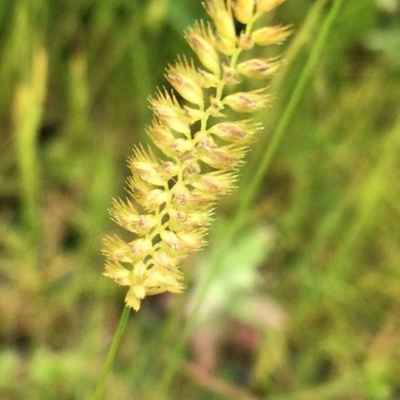

Plants for Pollinators highlights plants selected by the RHS as scientifically proven to tackle the declines in bees, butterflies and other pollinators.
Although its clustered spikelets trimmed with miniature magenta florets are now grown more as an ornamental plant, Crested Dogstail was once grown to be used to make bonnets. An important food plant for multiple species of butterflies, and works wonderfully in a wildmeadow mix, as it's exceptionally hardy- able to survive drought and cold and remain green throughout winter.
- Type: Perennial
- Height: 30–75cm.
- Flowers: May-June
- Soil Requirement: Moist but well-drained
- Light Requirement: Full sun or partial shade
- Natural Habitat: Meadows, grasslands
- Also known as: Dog's Grass, Dog's Tail Grass, Windlestraw

Plants for Pollinators highlights plants selected by the RHS as scientifically proven to tackle the declines in bees, butterflies and other pollinators.
Though it shares the same narrow, pearly white petals radiating from central sunny yellow florets, the Ox-Eye Daisy is much larger than the typical lawn daisy, with flower heads growing up to 5cm wide. A robust flower with classic charm, and perfect for pollinators to boot.
- Type: Perennial
- Height: 30-60cm.
- Flowers: May-August
- Soil Requirement: Well-drained
- Light Requirement: Full sun
- Natural Habitat: Meadows, road verges
- Also known as: Marguerite, Pretty Maids, Dog Daisy
With its clusters of uniquely vivid lilac petals with bursts of white, the Dames-Violet seems very different to her fellow violets, but bears the same sweet fragrance, which grows stronger in the evenings! A favourite of pollinators, and the dried petals can also be used for potpurri.
- Type: Perennial
- Height: 60-90cm
- Flowers: May-August
- Soil requirement: Moist but well-drained
- Light requirement: Full sun or partial shade
- Natural habitat: Hedgerows, wood edges, wasteground
- Also known as: Damask, Queen's Gilliflower, Sweet Rocket,

Plants for Pollinators highlights plants selected by the RHS as scientifically proven to tackle the declines in bees, butterflies and other pollinators.
This well-known wildflower provides proudly blazing bursts of golden petals in springtime landscapes! Hardy, easy-to-grow and wonderful for attracting pollinators, the dandelion's beauty is certainly something to sink your teeth into - in fact, its name originates from “lion’s tooth,” referring to their deeply serrated leaves.
- Type: Perennial
- Height: 10-45cm.
- Flowers: April-May
- Soil Requirement: Well-drained
- Light Requirement: Full sun or partial shade
- Natural Habitat: Meadows, road verges, fields
- Also known as: Bitterwort, Clock Flower, Lion’s Tooth

Plants for Pollinators highlights plants selected by the RHS as scientifically proven to tackle the declines in bees, butterflies and other pollinators.
Everything about this plant appears as soft and sweet as its common nickname, ‘Meadowsweet’: from its long, wispy branches of foaming, peachy-pink and creamy white flowers, down to its strong, sweet aroma. Plant in heavier, loamy soil- perhaps pairing it with other pastel plants for a real display of eye candy!
- Type: Perennial
- Height: 60-90cm
- Flowers: May-August
- Soil Requirement: Moist but well-drained
- Light Requirement: Full sun or partial shade
- Natural Habitat: Woodland verges, roadside verges, damp meadows
- Also known as: Lady’s Belt, Little Queen, Meadowsweet
The Evening Primrose is an easy-to-grow, tall-growing plant that really screams summertime style: its bell-shaped blooms grow in striking shades of yellow, pink and white, and produce a fetching fragrance. As its name suggests, it blooms late in the day, and but seeing the Evening Primrose's floral goblets glowing in the summer sunset is surely a sight to behold.
- Type: Biennial
- Height: 100-150cm.
- Flowers: June-October
- Soil Requirement: Well-drained, sandy
- Light Requirement: Full sun or partial shade
- Natural Habitat: Roadside verges, meadows
- Also known as: Cure-All, Four O’Clock, German Rambion
Here’s a real treat for you: the Feverfew is a small, bushy plant which grows daisy-like flower heads. Its small-but-dense size makes it a perfect potted plant, and though it likes being under the weather in plentiful sunlight, one may try to raise it indoors to best appreciate its strong scent. Highly valued for medicinal uses.
- Type: Perennial
- Height: 15–45cm.
- Flowers: July-September
- Soil Requirement: Well-drained
- Light Requirement: Full sun
- Natural Habitat: Waste lands
- Also known as: Featherfew, Pale Maids
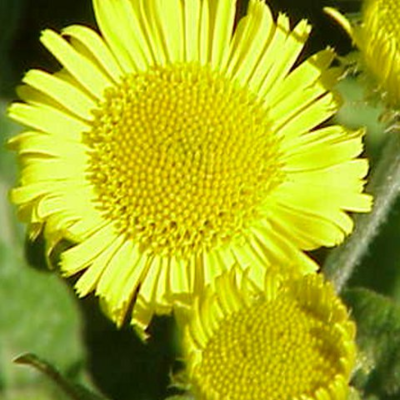

Plants for Pollinators highlights plants selected by the RHS as scientifically proven to tackle the declines in bees, butterflies and other pollinators.
If you're itching for a good pond-side plant, this may be what you need: these branches of bold yellow, daisy-like florets with ray-like petals are the most effective way to place some sunshine in a shady spot, but also has use in repelling invasive insects with its unique scent.
- Type: Perennial
- Height: 30-60cm.
- Flowers: July-September
- Soil Requirement: Moist
- Light Requirement: Full sun or partial shade
- Natural Habitat: Riversides, marshes, ditches
- Also known as: Harvest Flower, Job’s Tears, Pig-Daisy
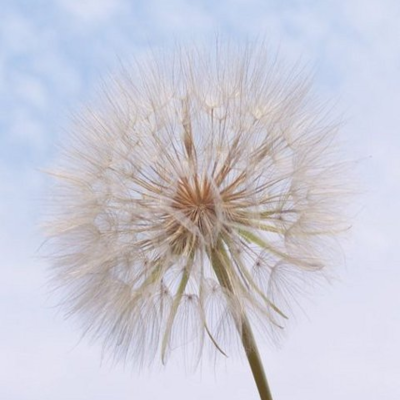

Plants for Pollinators highlights plants selected by the RHS as scientifically proven to tackle the declines in bees, butterflies and other pollinators.
Haven’t you herd? These buttery-yellow blooms framed by sharp green phyllaries have a lot in common with the famous dandelion, up to its famously fluffy, shiny sandy-silver seed heads later in the season for which they’re named. However, this hardy herb is a lot more showoffish, growing fairly tall in just about any environment. An early bloomer that closes later in the day, but when it blooms, it truly is outstanding in its field!
- Type: Perennial
- Height: 30–90cm.
- Flowers: May-July
- Soil Requirement: Moist or well-drained
- Light Requirement: Full sun or partial shade
- Natural Habitat: Grasslands, meadows, roadsides
- Also known as: Clock Flower, Johnny-Go-To-Bed-At-Noon, Salsifex
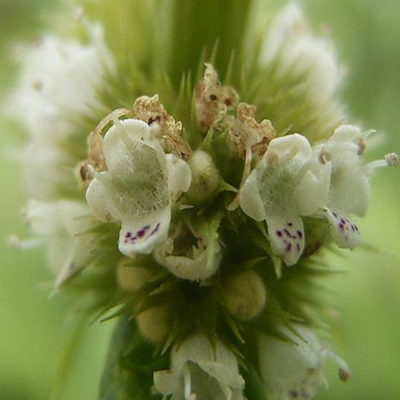

Plants for Pollinators highlights plants selected by the RHS as scientifically proven to tackle the declines in bees, butterflies and other pollinators.
Growing tall with distinct, spear shaped and toothy leaves, this whimsical wetland plant has a softer side in its clustered stems of miniature ivory petals, scarlet-spotted lower lips. An excellent plant for pollinators, and makes for a pretty pondside palette!
- Type: Perennial
- Height: 50-100cm.
- Flowers: July-September
- Soil Requirement: Moist
- Light Requirement: Full sun or partial shade
- Natural Habitat: River banks, stream sides
- Also known as: Bugleweed
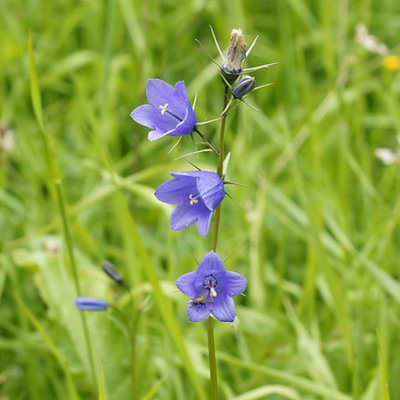

Plants for Pollinators highlights plants selected by the RHS as scientifically proven to tackle the declines in bees, butterflies and other pollinators.
Though dainty by appearance, these papery bells of blue beauty on slender stalks are actually remarkably resilient to the elements, and thus we recommend that you let this well-loved wildflower run through rockeries, and avoid overcrowding them.
- Type: Perennial
- Height: 15-45cm.
- Flowers: June-September
- Soil Requirement: Well-drained, sandy
- Light Requirement: Full sun
- Natural Habitat: Hillsides, coastal areas,
- Also known as: Cuckoo Shoe, Heath Bells, Scottish Bluebell
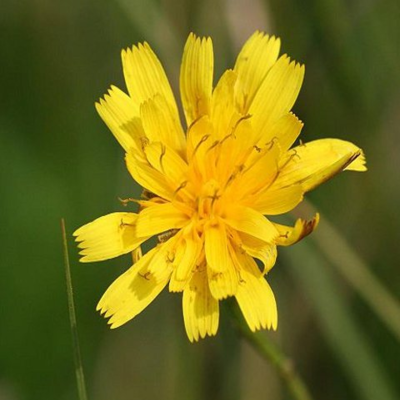

Plants for Pollinators highlights plants selected by the RHS as scientifically proven to tackle the declines in bees, butterflies and other pollinators.
In the autumnal gloom, spread some extra sunshine in a marshy environment with these dandelion-like rosettes of glinting gold. Not only is the Autumn Hawkbit long-lived, robust and especially attractive to pollinators, its seeds are also attractive to finches!
- Type: Perennial
- Height: 15-50cm.
- Flowers: July-September
- Soil Requirement: Moist
- Light Requirement: Full sun or partial shade
- Natural Habitat: Grasslands, rocky ridges, pathways.
- Also known as: Fall Dandelion
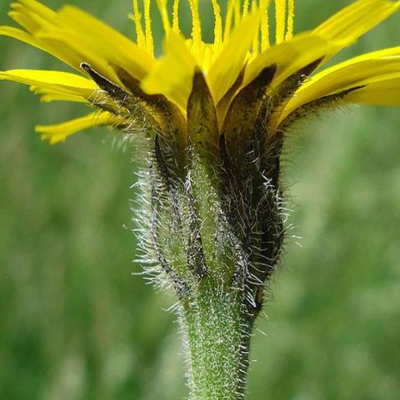

Plants for Pollinators highlights plants selected by the RHS as scientifically proven to tackle the declines in bees, butterflies and other pollinators.
Though this warm-paletted wildflower's plumes of canary-yellow petals look like that of dandelion, one can tell the Rough Hawkbit apart by their larger heads with shades of red and orange on the outer florets, as well as a pleasing fragrance which helps to bring bees and butterflies to your garden.
- Type: Perennial
- Height: 15-50cm.
- Flowers: June-October
- Soil Requirement: Well-drained, sandy
- Light Requirement: Full sun
- Natural Habitat: Grasslands, rocky ridges, pathways.
- Also known as: Greater Hawkbit
Likely named for its attractive foliage - forming in dense rosettes of mottles maroon leaves - one shouldn’t overlook its brilliant branching stems of yellow, daisy-like blooms, which helps to bring in the pollinators. An excellent ornamental flower which grows well in rockeries, meadows or mixed pots and baskets.
- Type: Perennial
- Height: 15-45cm.
- Flowers: June-September
- Soil Requirement: Well-drained
- Light Requirement: Full sun
- Natural Habitat: Grasslands, quarries
- Also known as: Leopard
Hyssop is a herb related to the mint, with aromatic leaves which are sometimes used for flavouring and medicine. It looks just as sweet, producing spikes of petals from vivid violet to royal blue and even white. A delightful bit of eye candy that's also attractive to pollinators and easy to grow.
- Type: Perennial
- Height: 40-60cm.
- Flowers: July-September
- Soil requirement: Moist or well-drained
- Light requirement: Full sun or partial shade
- Natural habitat: Grassland, meadows, roadsides
The county flower of Derbyshire. Jacob's Ladder gets its name from its climbing, ladder-like foliage. Produces lavender blue, bell-shaped flowers form in clusters at the top of its tall, slender stems.
- Type: Perennial
- Height: 50-100cm
- Flowers: June - July
- Soil requirement: Moist but well-drained
- Light requirement: Full sun or partial shade
- Natural habitat: North facing areas, limestone hillsides, old meadows
- Also known as: American Great Valerian, Charity, Ladder to Heaven

Plants for Pollinators highlights plants selected by the RHS as scientifically proven to tackle the declines in bees, butterflies and other pollinators.
These thistle-like florets of magenta atop maroon flower heads are an excellent pick for any garden, despite their prickly appearance: Not only are they super hardy, they're vital in wild meadows for supporting weaker wildflowers, and they're also attractive to butterflies and bees!
- Type: Perennial
- Height: 30-60cm.
- Flowers: June-September
- Soil Requirement: Well-drained
- Light Requirement: Full sun or partial shade
- Natural Habitat: Grasslands, forest verges
- Also known as: Bell Weed, Hardhead, Tassel

Plants for Pollinators highlights plants selected by the RHS as scientifically proven to tackle the declines in bees, butterflies and other pollinators.
Greater Knapweed is hardy and tall-growing, and helps to bring in butterflies. We recommend complimenting its sharp and showy, thistle-like flowers with a similarly starburst-shaped scabious, or use softer shapes to and colours contrast with specimens such as the ox-eye daisy or mallow.
- Type: Perennial
- Height: 40-90cm.
- Flowers: June-September
- Soil Requirement: Well-drained
- Light Requirement: Full sun or partial shade
- Natural Habitat: Grasslands, cliff-sides
- Also known as: Black Top
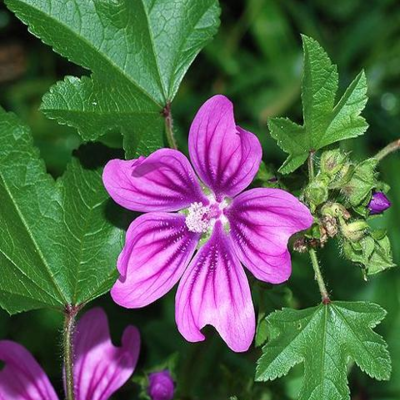

Plants for Pollinators highlights plants selected by the RHS as scientifically proven to tackle the declines in bees, butterflies and other pollinators.
There's many a reason to plant the tough, adaptable and hearty bloom that is mallow: cherish it for its heart-winning, heart-shaped pink petals veined with violet, or for its numerous medicinal and culinary uses; it's a flower that promises to please in many different environments.
- Type: Annual or Biennial
- Height: 30-90cm.
- Flowers: June-September
- Soil Requirement: Moist but well-drained
- Light Requirement: Full sun
- Natural Habitat: Meadows, road verges
- Also known as: Cheese Cakes, Marsh Mallow, Round Dock

Plants for Pollinators highlights plants selected by the RHS as scientifically proven to tackle the declines in bees, butterflies and other pollinators.
The Musk Mallow- so named for its musky, strong scent which only gets stronger in the summer warmth- produces pastel pink, heart-shaped petals; no wonder mythology treats it as a flower of love! Beloved by bees, and its precious blooms are an extra-sweet sight in the garden.
- Type: Perennial
- Height: 30-90cm.
- Flowers: July-September
- Soil Requirement: Well-drained
- Light Requirement: Full sun
- Natural Habitat: Hedgerows, meadows
- Also known as: Abelmosk, Ambrette
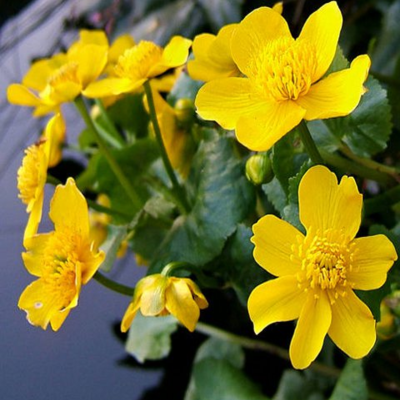

Plants for Pollinators highlights plants selected by the RHS as scientifically proven to tackle the declines in bees, butterflies and other pollinators.
Marigolds are always a lovely choice for the garden- even in loamy soil. The simple-yet-stunning beauty of these clusters of heart-shaped leaves and beaming golden flowers goes without saying- what’s more, they’re hardy, nectar-rich and even considered to be good luck in some parts of the country. Best placed in a sunny spot where they’ll give off a gorgeous glow!
- Type: Perennial
- Height: 25-50cm.
- Flowers: March-August
- Soil Requirement: Moist
- Light Requirement: Full sun
- Natural Habitat: Marshes, coast lines, river banks
- Also known as: Goldings, Kingcup, Publican’s Coat
Choosing different wildflower plants by species gives you complete control over when you plant them, where you plant them and what the end result will be. And buying wildflower plug plants instead of seeds, means that you don't have to wait for them to germinate - perfect if speed is of the essence!
The full range of over 100 British wildflower plants species from Boston Seeds is available to buy online in trays of 25, 150 and 500 plug plants and all are available with nationwide delivery.
Want to learn more about the likes and dislikes of your favourite wildflower plants? Our handy wildflower species quide will tell you all you need to know - yours to download and keep for FREE.
Buy With Confidence

